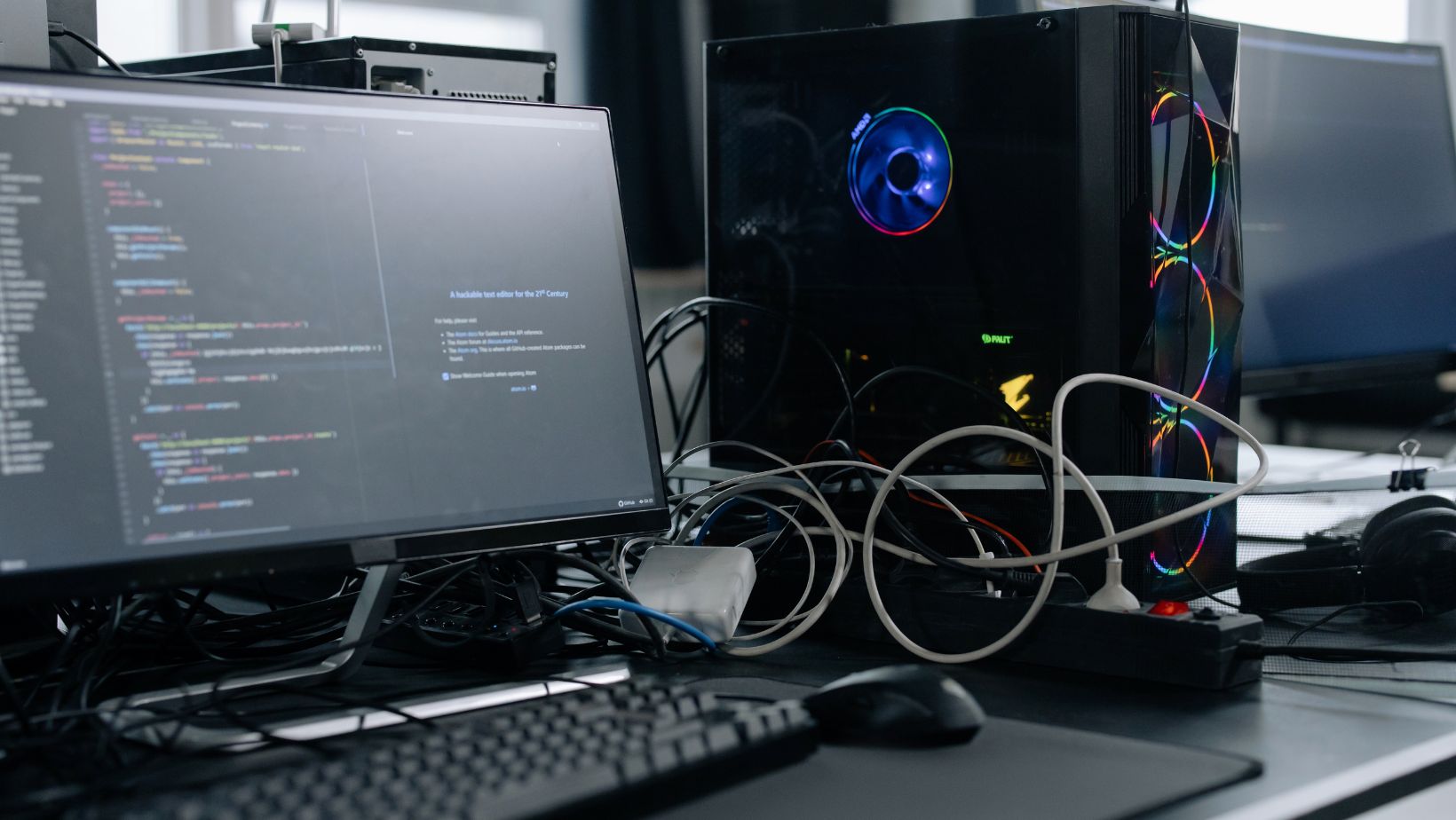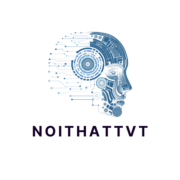Key Takeaways
- Identify Common Causes: Understand that overheating, power supply issues, and hardware failures are the primary reasons for unexpected computer shutdowns.
- Monitor Temperatures: Regularly check the internal temperatures of critical components like CPU and GPU to prevent overheating, aiming for temperatures below 80°C for CPUs and 85°C for GPUs.
- Assess Power Supply: Inspect the power supply unit (PSU) for damage and ensure it adequately supports your system’s components to avoid disruptions.
- Run Diagnostics: Utilize built-in or third-party diagnostic tools to identify any failing hardware components, guiding you to necessary repairs or replacements.
- Implement Preventive Measures: Maintain optimal cooling through regular cleaning, use reliable surge protectors, and consider using uninterruptible power supplies (UPS) to safeguard against power interruptions.
- Seek Professional Help When Necessary: If shutdowns persist despite troubleshooting, or if you notice signs like unusual noises or frequent failures to power on, consult a technician for expert evaluation.
A computer that keeps shutting down unexpectedly can be incredibly frustrating and disruptive. Whether it’s during an important task or while enjoying a favorite show, these sudden interruptions can leave users feeling helpless. Understanding why this happens is crucial for anyone looking to maintain their device’s performance.
Various factors contribute to this issue, from overheating and hardware malfunctions to software conflicts and power supply problems. Identifying the root cause is the first step toward finding an effective solution. By exploring common reasons behind this irritating behavior, users can take proactive measures to prevent future shutdowns and ensure their computer runs smoothly.
Computer Keeps Shutting Down
Computers often shut down unexpectedly due to several common issues. Understanding these causes helps users identify and resolve the problems effectively.

Overheating Issues
Overheating leads to automatic shutdowns to protect internal components. Dust accumulation in fans or vents restricts airflow, causing heat buildup. High-performance tasks, like gaming or video editing, generate more heat, increasing the risk of shutdowns. Ambient temperature can also influence overheating. Regular cleaning of vents and ensuring proper fan operation prevents overheating issues.
Power Supply Problems
Power supply problems can cause abrupt system shutdowns. An inadequate power supply unit (PSU) may fail to provide sufficient power for the computer’s components. Faulty power cables or damaged connectors also contribute to shutdowns. Inconsistent power sources from wall outlets can lead to interruptions. Testing the PSU with a multimeter or replacing it ensures a stable power supply.
Hardware Failures
Hardware failures result from defective components, leading to system instability. Failing hard drives or memory (RAM) can cause the computer to shut down unexpectedly. Motherboard issues, including damaged capacitors or circuits, also affect performance. Regular system diagnostics and hardware monitoring tools help identify and address hardware failures effectively.
Troubleshooting Steps
Identifying the cause of unexpected shutdowns requires a systematic approach. The following troubleshooting steps focus on evaluating temperature levels, inspecting the power supply, and running hardware diagnostics.
Checking Temperature Levels
Monitoring temperature levels is crucial in preventing shutdowns caused by overheating. Use software tools that display internal temperatures of crucial components like the CPU and GPU. He, she, or they should aim to keep the CPU temperature below 80°C and the GPU temperature under 85°C during high-performance tasks. If temperatures exceed these benchmarks, users must clean dust from fans and vents, ensure proper airflow, and possibly replace thermal paste on processors for better heat dissipation.
Inspecting Power Supply
Assessing the power supply is essential to ensure consistent power delivery. Check for signs of overheating or damage on the power supply unit (PSU) itself. He, she, or they should verify that the PSU provides adequate wattage for all components. Replacement of faulty power cables can significantly improve system stability. If the issue persists after these checks, testing the power supply with a multimeter or replacing it entirely might resolve unexpected shutdowns.
Running Hardware Diagnostics
Utilizing hardware diagnostics can help identify failing components. Most operating systems offer built-in diagnostic tools that can assess memory, hard drives, and other hardware. He, she, or they can also download third-party diagnostic software for more comprehensive testing. Pay attention to error messages or flags that indicate specific component failures, as these can guide effective repairs or replacements, restoring stable performance.
Preventive Measures
Implementing preventive measures helps reduce the likelihood of unexpected shutdowns. Users benefit from establishing routines that maintain their computer’s performance and longevity.
Maintaining Optimal Cooling
Maintaining optimal cooling is crucial for preventing overheating, a common cause of unexpected shutdowns. Users should clean fans and vents regularly to remove dust and debris. Ensuring adequate airflow around the computer improves ventilation. Utilizing a cooling pad for laptops enhances heat dissipation during intensive tasks. Additionally, monitoring system temperatures with software tools can alert users to overheating, allowing them to act before shutdowns occur.
Using a Reliable Surge Protector
Using a reliable surge protector safeguards a computer against power fluctuations that can cause abrupt shutdowns. Users must select surge protectors with sufficient joule ratings to handle potential surges. It’s advisable to integrate uninterruptible power supplies (UPS) for backup power during outages, allowing users to save their work before unexpected shutdowns. Regularly testing surge protector functionality ensures that it remains effective in protecting valuable equipment from electrical damage.
When to Seek Professional Help
Sometimes, unexpected shutdowns indicate deeper issues requiring professional assistance. Recognizing signs early can save time and resources.

Signs You Need to Consult a Technician
- Frequent Shutdowns: If a computer shuts down multiple times a day, this suggests a serious underlying issue.
- Inability to Power On: When a computer struggles to turn on or powers off during startup, professional evaluation is essential.
- Overheating: If temperatures consistently exceed critical thresholds despite cleaning and cooling efforts, expert intervention may be necessary.
- Hardware Noise: Unusual noises, like grinding or clicking, often signal failing hardware components that should not be ignored.
- Error Messages: Persistent error messages related to hardware or system performance may indicate deeper problems requiring technical expertise.
- Physical Damage: Signs of physical damage, such as burnt components or loose connections, necessitate a technician’s assessment for repairs or replacements.
- Diagnostic Fees: Most technicians charge a base diagnostic fee, ranging from $50 to $100, depending on location.
- Repair Costs: Repair expenses vary based on parts and labor, often starting at $100 and increasing with complexity.
- Replacement Parts: Costs of replacement components can fluctuate widely, depending on hardware specifications; for example, a new power supply may cost $50 to $150.
- Warranty Impact: Many repairs may fall under warranty coverage, which can save significant expenses; check warranty details before proceeding.
- Potential Upgrades: Sometimes, investing in upgrades, such as additional cooling systems or hardware improvements, enhances performance and may be financially prudent long-term.
Common Causes of Computer Shutdowns
Unexpected computer shutdowns can disrupt productivity and lead to frustration. By understanding the causes and implementing preventive measures, users can significantly reduce the likelihood of these interruptions. Regular maintenance such as cleaning vents and ensuring proper airflow is essential for optimal performance. Monitoring temperatures and using reliable power sources further safeguards against sudden shutdowns.
When issues persist despite troubleshooting, seeking professional assistance is a wise choice. Identifying and addressing problems early can save time and money in the long run. With the right approach, users can enjoy a stable computing experience, minimizing disruptions and enhancing overall efficiency.

